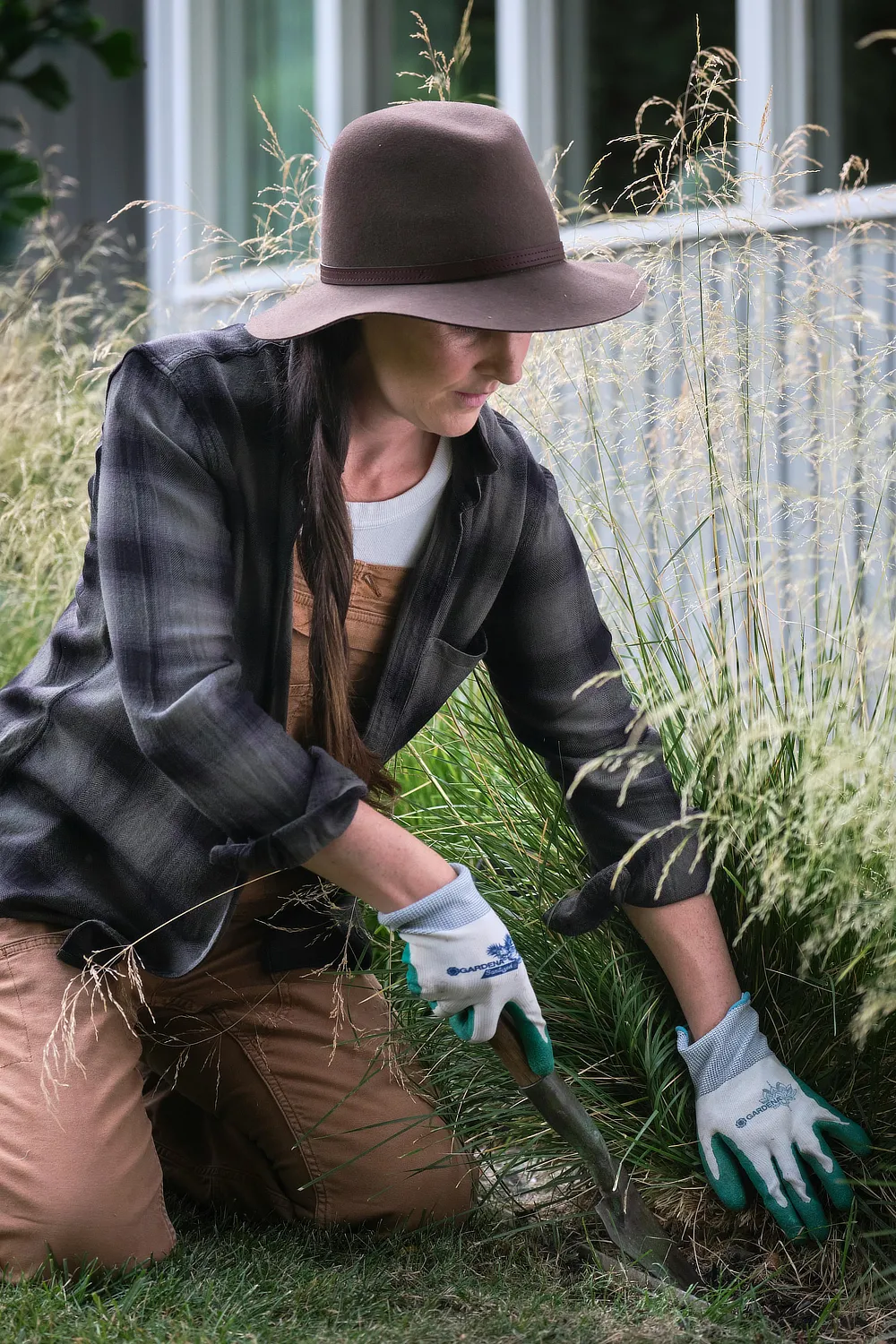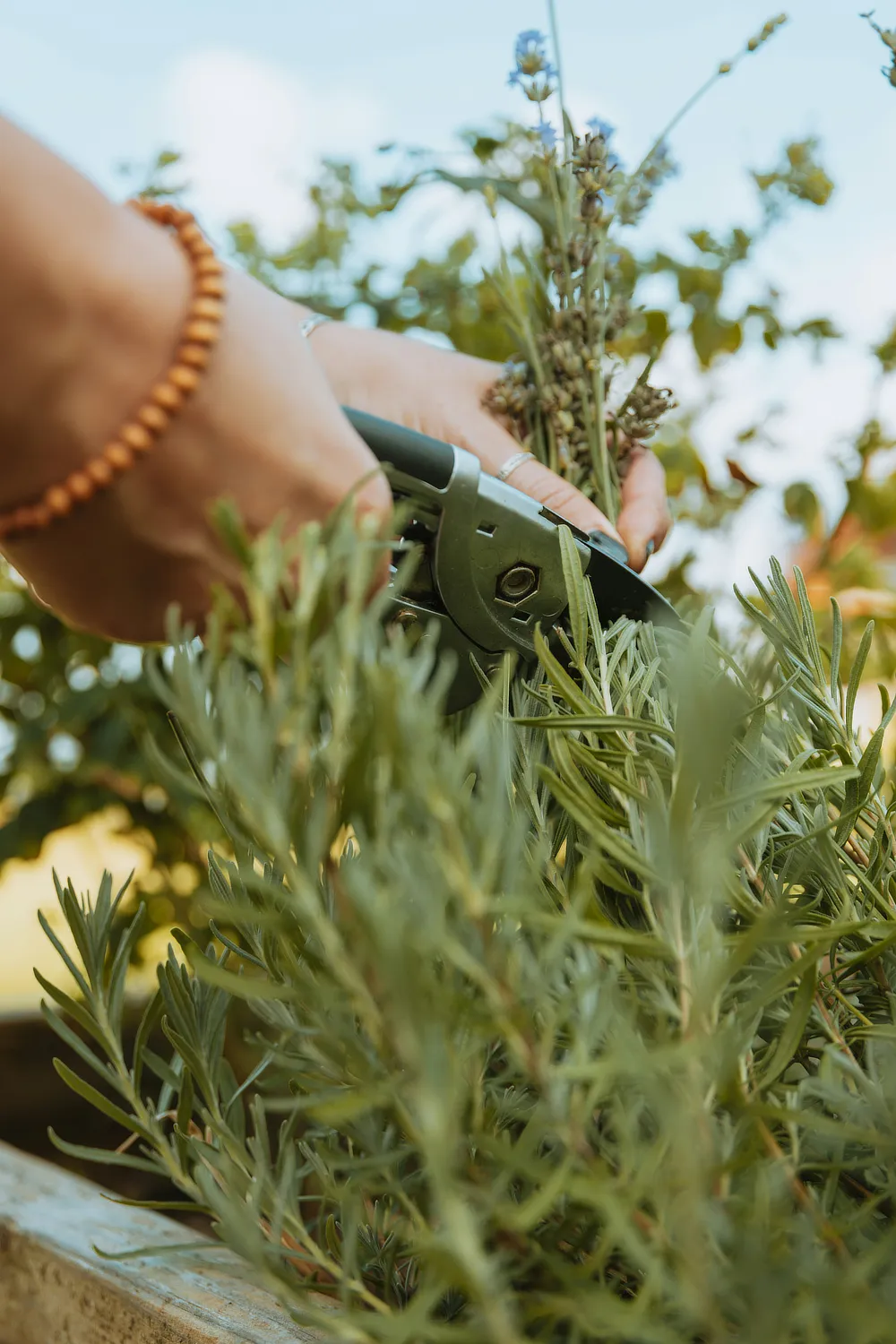Winter may seem like the garden has been forgotten about, the lawn is hardly growing, the branches bare and getting out into your garden may seem like a distant memory. I have just returned from an overseas trip and there is plenty of things I will be doing this weekend to get my garden back in order and ready for spring.
First up I will be cutting down my ornamental grasses and perennial’s that have been left. You can do this job earlier in the year, but I love the structural element they add to the winter garden and delight in the decay as they age, especially when the light hits them in the late afternoon. A hard cut back now will give space for all the new shoots to flush back in a few weeks when the warm weather starts to promote growth, if you leave the dead growth, you will have a scrappy looking plant with old and new foliage together. Cut down low with some shears or secateurs leave around 10cm from soil level, when coming back in subsequent years prune around 5 cm higher to ensure you don’t damage the core of the plant. With perennials such as Salvia, Echinacea, Rudbeckia and Oenothera look for the new growth at the base of the plant and only cut away the old growth protecting as much of the new shoots as possible.
If you have large clumps of perennial’s, you can lift the whole thing out of the ground using a shovel or even better a garden fork and split them into various smaller plants to be distributed around the garden. Splitting and re planting now will give you vigorous growth in spring and a fuller more mature looking garden moving forwards.
Last week I wrote about sowing the seeds for the spring vegetable patch to have them ready for the warm weather, the same can be done for annuals in the garden beds. Walk around the garden and look at the spaces that could do with filling up. Make note of the size of the voids and the aspect that space sits in so you can sit down and work out the best plant for that location. This will make your trip to the nursery much more successful as you’ll know what you are looking for rather than buying on impulse and hoping it works for the spot you have.
If you have a full bed with a few dots of spaces, perhaps not big enough for a new shrub. Think about adding in some annuals for a dramatic effect, I will be sowing packets of white cosmos into individual plugs and then once germinated and growing strong plant them out amongst the existing garden beds. This will give a completely different look to the garden for the warm seasons and make great cut flowers to take inside.
Planning for late spring and summer isn’t a bad idea either, keep an eye out for punnets of spring and summer flowering plants such as petunias, these can be purchased for next to nothing and separated out to grow on giving more impact for less outlay when the weather dopes heat up again.
Due to the lower light levels, my lawn has exploded with weeds, all of them showing off how much faster they are growing than the lawn itself! Luckily for me it’s a small lawn and hand pulling them won’t be an issue, rather than walking around like a chicken plucking the odd one here and there I like to be systematic about it. I take a string line and divide up the lawn into rows. Working up and down the row you ensure you get every single weed in that section before moving on. It may seem a touch anal, but this method eradicates 99% of the weeds meaning the spring recovery is quicker due to the lack of competition. If you have a larger lawn a spray on herbicide will make the job quicker, just stay off it (including furry friends) until the herbicide has dried. It’s a good idea to weed your garden beds and pathways too for the same reason, some weeds really take hold and establish in winter making then a bigger pest to remove come spring.
The wetter conditions of winter means mulch breaks down due to decay so grab a few bags from the hardware store and top up any areas that are looking a little bare, and don’t be lazy and dump the mulch on top of weeds, they need removing before the mulch goes down.


